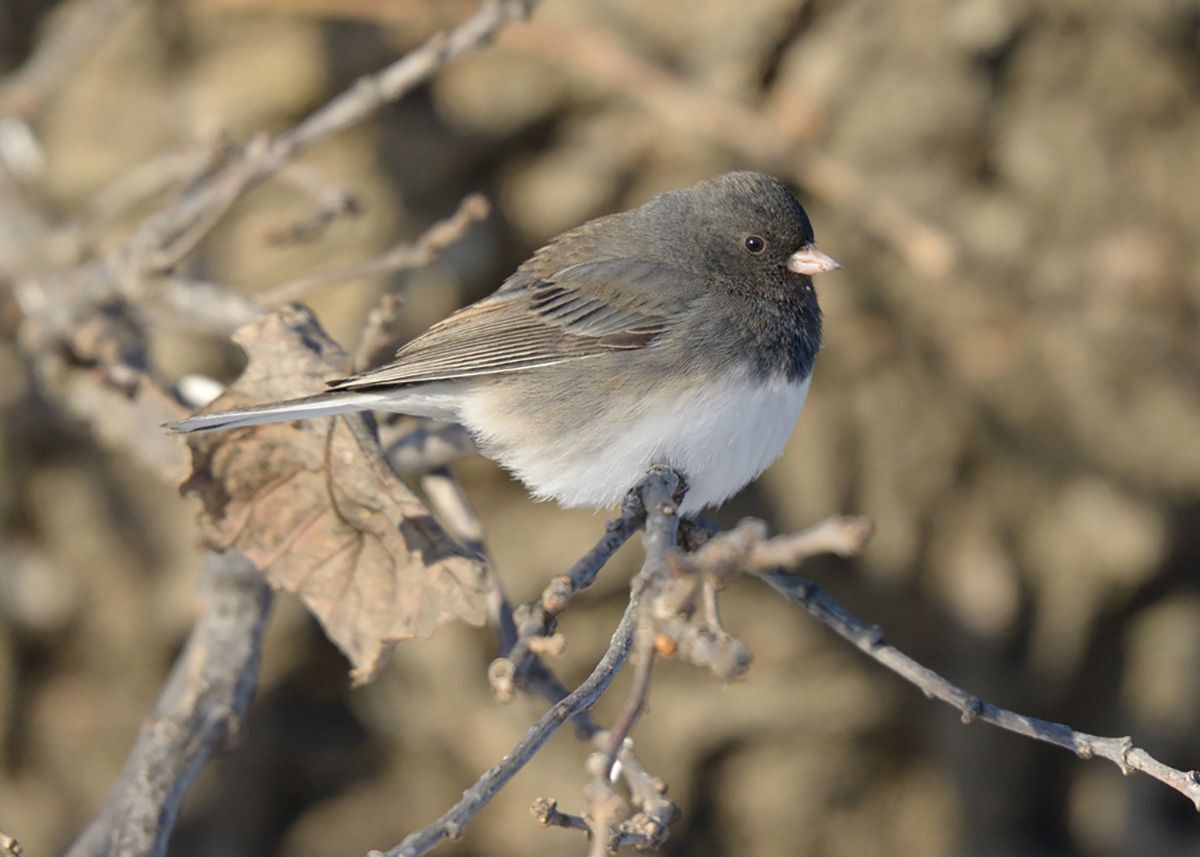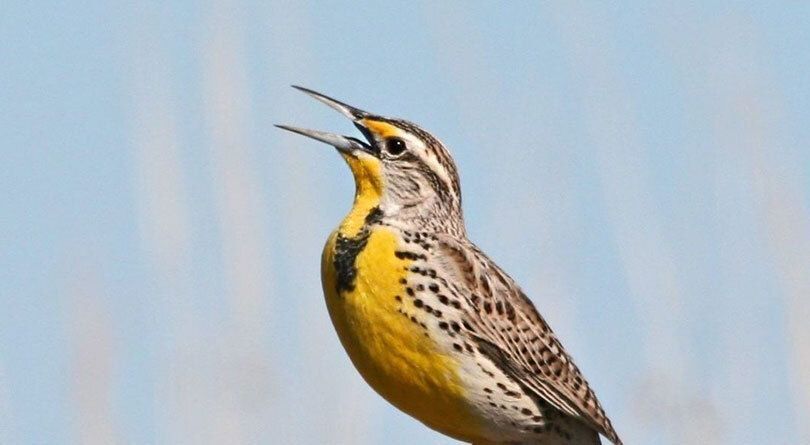
Photo: Dark-eyed Junco (Slate-colored) by Larry Frame
When you think “winter shelter,” what do you picture? A cozy mountain cabin with fireplace aglow? Birds don’t rely on furnaces: their fiery metabolism and insulating layers of feathers keep them warm. But they still need shelter from the elements. Understanding what they need in the cold months will help you find more birds — and know how to help them make it through the winter.
In November, the shift change from our fall migratory birds to our winter resident birds is nearly complete. Overwintering ducks such as Common Goldeneyes and Ring-necked Ducks float on lakes and rivers, Dark-eyed Juncos scratch the ground for seeds and insects, and Sharp-shinned Hawks keep a keen eye on their songbird prey.
For birds spending the winter, good habitat is key. Rather than a log cabin, a Harris’s Sparrow’s idea of a charming home for December is a hedge or shrubby field edge. Those habitats are full of seeds that can sustain them for months. During storms, the plants offer protection from wind, rain and snow, too. Though birds’ feathers are great at keeping them warm and dry, they don’t make birds totally invincible. They still rely on the shelter and food provided by native plants to survive the worst that winter throws at them.
Waterfowl depend on habitat in winter, too — just in a different way. They seek out open water that gives them access to aquatic plants, arthropods, and fish, depending on their preference. Deep freezes tend to concentrate waterfowl in smaller patches of open water — and that also makes them easier targets for Bald Eagles. All this can create quite the show on waterbodies like Lake Manawa or Carter Lake, often best enjoyed from inside a car with binoculars or with a spotting scope at a convenient window.
If you try to look at the landscape like a bird does, you’ll start spotting their preferred hideaways and find them more reliably in November and December. This can also help guide your gardening. Shrubs and trees create shade in the summer, and they also offer food and shelter in the winter. Planting native species helps give birds what they need year-round. See how the residents of your neighborhoods’ habitats change throughout the year. Notice how shrubs such as serviceberry and native prunes, which gave us flowers earlier in the year, now provide fruits that carry Cedar Waxwings and other fruit-eaters through to the spring.
And don’t forget about the ducks! Supporting wetland conservation helps ensure that waterfowl get the food they need to sustain their fat reserves and survive.
Marvel at the ways that birds make it through the fall and winter — and consider how you can help them out through improving habitat wherever you live.

